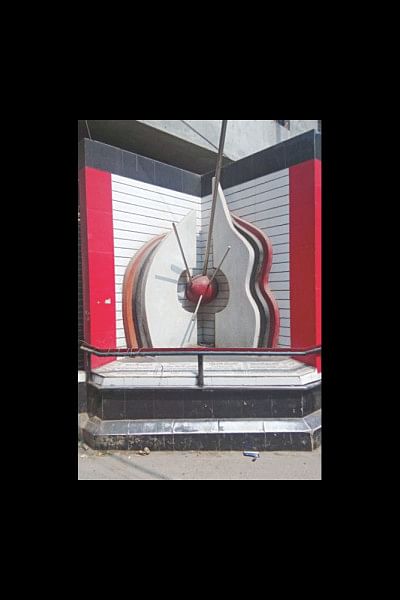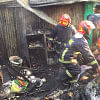Nimtoli to Chawkbazar: Monument built, no lessons learnt

After an inferno claimed 124 lives in Old Dhaka's Nimtoli in 2010, a monument was built at that place. The structure, named “Nimtoli Tragedy”, bears many inscriptions. One of them says it was built to raise awareness on fire and the dangers of storing chemicals in residential buildings.
The move yielded little results before the fire in Chawkbazar on Wednesday killed another 67. The sites of the chemical-fed disasters are just a kilometre apart from each other.
And even after such loss of lives, Old Dhaka remains crammed with chemical warehouses and other risky factories, much to the agony of the victim families and other locals.
Talking to The Daily Star yesterday, Mamun Mia, who lost his seven-year-old son in the Nimtoli incident, said, “We did not get justice in the last nine years. We don't even know who owned the chemical warehouse responsible for the fire. And now, this [Chawkbazar incident] has happened.”
“Who will take the responsibility?” asked the frustrated man.
“On every third June [the anniversary of the Nimtoli Tragedy], we hold a programme and call for the relocation of chemical warehouses from old Dhaka. The media covers the programme and that's all”.
He said the authorities had removed such warehouses from Nimtoli after the disaster but risky plastic factories were still there. “You will find chemical warehouses in other parts of Old Dhaka.”
According to a survey by the Fire Service and Civil Defence at the end of 2017, a total of 360 factories and chemical stores were found in wards 24 and 35 of Dhaka South City Corporation.
Both the wards are in Old Dhaka. It indicates that the total number of such factories and stores in the densely populated old town -- stretching over 1,050 acres -- would be much higher.
Yesterday, these correspondents visited Siddiq Bazar, Agamasi Lane, Armanitola, Mitford, and Bangshal areas and found that many businessmen were openly selling chemicals on narrow lanes.
The Nimtoli fire had started from a stove in a building that housed a flammable chemical depot on the ground floor. When the flames came in contact with the chemicals, it engulfed eight residential buildings and some 20 shops within minutes, according to firefighters.
After the incident, different authorities took some steps to remove the chemical warehouses from Old Dhaka. The move came after a case was filed and the High Court issued directives in this regard.
However, things got back to square one.
Fifty-five-year old Mohammad Sadeq, who lost his son and daughter in the 2010 disaster, said, “Chemical warehouses are still in Old Dhaka because many house owners are greedy.”
“They prefer renting their spaces to warehouses than to families as it brings them more money,” he said.
Many others in the area said some “influence people” always try to prevent the relocation of chemical stores for the sake of huge profits.
Contacted, Shafiqul Islam Milon, joint secretary of Bangladesh Chemical and Perfumery Merchant Association, however, claimed that they don't preserve any flammable chemicals in the warehouses.
“The authority gave us a list of 29 flammable chemicals and asked us not to store them in densely populated areas like Old Dhaka. So we keep some of the chemicals in our showrooms and preserve the rest in areas outside Dhaka, including in Savar and Gazipur,” he said.
Sadeq now runs a decorator store at one of the buildings that were once ravaged by the Nimtoli fire. He did not seem convinced by the claims made by those like Milon.
“We are tired of calling upon the government to free Old Dhaka of chemical warehouses. Is it even hearing us?” he asked.


 For all latest news, follow The Daily Star's Google News channel.
For all latest news, follow The Daily Star's Google News channel. 







Comments